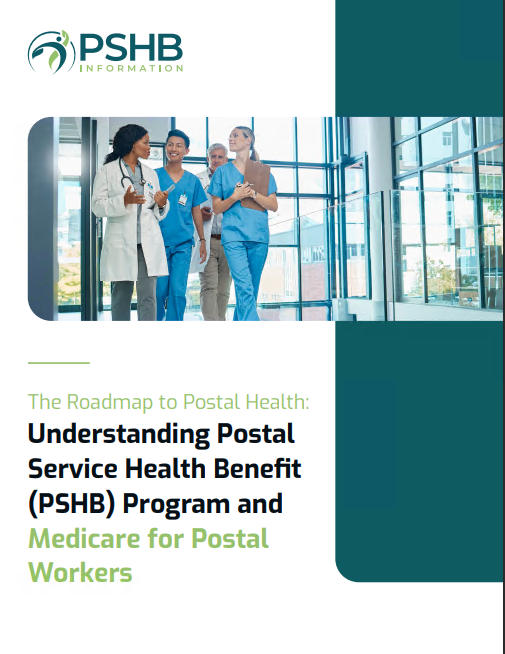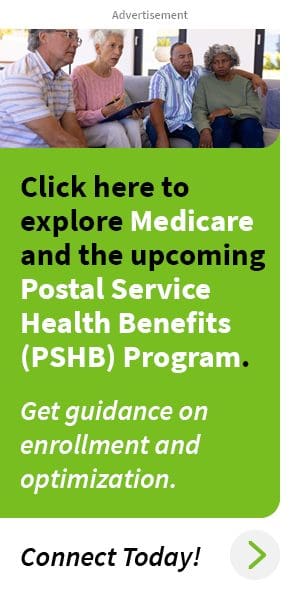Key Takeaways
-
The Postal Service Health Benefits (PSHB) program, set to replace FEHB in 2025, introduces significant changes that require early preparation.
-
Taking proactive steps now will help you avoid potential coverage gaps, penalties, and ensure you make the most of the new healthcare system.
Why 2025 Is a Turning Point for USPS Health Benefits
The shift to the Postal Service Health Benefits (PSHB) program in January 2025 marks a major milestone in USPS employee healthcare. Replacing the Federal Employees Health Benefits (FEHB) program, PSHB is designed to address the specific needs of USPS workers, retirees, and their families. But with this new system comes new rules, deadlines, and opportunities—all of which you’ll need to understand to keep your healthcare coverage intact.
Whether you’re actively employed or retired, these changes affect you. The good news? By preparing now, you can transition smoothly into this restructured system while maximizing your benefits.
What Makes PSHB Different from FEHB?
PSHB isn’t just a new name for an old system. It’s a tailored approach to healthcare for USPS employees. Here’s how it stands apart:
-
Customized Coverage: Unlike the broader FEHB program, PSHB plans focus on postal workers and retirees, ensuring options that align closely with your needs.
-
Mandatory Medicare Enrollment: For Medicare-eligible retirees, enrolling in Part B is now required to maintain PSHB coverage. This ensures better integration of benefits and minimizes gaps.
-
Prescription Cost Caps: Starting in 2025, Medicare Part D introduces a $2,000 annual cap on out-of-pocket prescription drug expenses, offering substantial savings.
-
Streamlined Options: While FEHB offered a wide array of plans, PSHB narrows the choices to simplify decision-making and better target USPS-specific needs.
These differences bring new benefits but also mean adapting to new requirements. Early understanding is key.
Medicare: The Backbone of PSHB for Retirees
Medicare plays a crucial role in the PSHB structure, particularly for retirees. The integration of Medicare and PSHB creates a stronger safety net, but it also comes with new responsibilities. Here’s what you need to know:
-
Part B Enrollment Is Mandatory: Enrolling in Medicare Part B is now a non-negotiable requirement for PSHB coverage. This step ensures comprehensive coverage for outpatient services, preventive care, and more.
-
Prescription Drug Savings: With the $2,000 annual out-of-pocket cap on drug costs, retirees managing chronic conditions will see significant financial relief.
-
Better Coordination: Medicare and PSHB together eliminate gaps in coverage, offering predictable costs for hospital stays, doctor visits, and prescriptions.
If you’re not already enrolled in Medicare, make sure you understand the enrollment windows and deadlines to avoid penalties or coverage interruptions.
Key Enrollment Dates You Can’t Miss
Meeting the necessary deadlines is critical to maintaining uninterrupted healthcare coverage under PSHB. Mark these dates:
-
2024 Open Season: Running from November 11 to December 9, this is your window to review PSHB plans and make your selection for 2025. Don’t leave this until the last minute—use the time to compare plans and find the best fit for you.
-
Medicare Initial Enrollment Period (IEP): If you’re nearing 65, your IEP spans seven months (three months before your birthday, the month of, and three months after). Aligning Medicare enrollment with PSHB is essential.
-
Special Enrollment Periods (SEPs): Life changes like retirement or loss of other coverage may qualify you for a SEP, giving you flexibility to adjust your plan outside Open Season.
Staying proactive and on schedule will save you from unnecessary complications later.
Why This Change Is Important for Your Family
The PSHB transition isn’t just about you—it’s about protecting your family’s healthcare too. Here’s how the changes benefit USPS families:
-
Dependents Are Covered: PSHB plans continue to include options for family members, ensuring comprehensive coverage for your loved ones.
-
Lower Out-of-Pocket Costs: Features like the Medicare Part D drug cap help reduce financial stress for households managing medical expenses.
-
Targeted Benefits: USPS-specific plans are better equipped to meet the unique needs of postal families, offering improved coverage options compared to FEHB.
Taking the time to understand the transition will help you and your family navigate these changes smoothly.
How to Prepare Right Now
Don’t wait until 2025 to start thinking about PSHB. Here’s what you can do today to ensure a seamless transition:
-
Review Your Current Coverage: Take a close look at your existing FEHB plan. What works for you? What could be better? Use this as a starting point to evaluate PSHB options.
-
Understand Medicare Requirements: If you’re Medicare-eligible, confirm your enrollment in Part B. If you’re not yet eligible, mark your calendar for your IEP.
-
Research PSHB Plans: USPS will provide tools and resources to compare plans. Use these to understand premiums, deductibles, and coverage specifics.
-
Budget for 2025: Factor in Medicare Part B premiums and any changes in plan costs. Planning ahead ensures no surprises.
-
Take Advantage of Open Season: When November 2024 arrives, act promptly. Compare options and make your choice early to avoid default assignments.
These steps may seem simple, but they’re crucial for a smooth transition into the new system.
What Happens If You Don’t Prepare?
Ignoring the upcoming changes can lead to serious consequences:
-
Default Plan Assignments: If you don’t select a plan, you may be automatically enrolled in a default option that doesn’t meet your needs.
-
Lifelong Medicare Penalties: Delaying enrollment in Medicare Part B can result in permanent premium increases, costing you more in the long run.
-
Coverage Gaps: Without proper coordination, you could face interruptions in your healthcare services or unexpected out-of-pocket expenses.
Don’t let inaction compromise your health coverage. Taking steps now will save you from unnecessary stress and financial strain.
Making the Most of PSHB Benefits
The new system is designed to improve healthcare for USPS employees and retirees. Here’s how to ensure you’re maximizing your benefits:
-
Stay Informed: USPS will release information and tools to guide you through the transition. Take advantage of these resources.
-
Plan for Long-Term Needs: Choose a plan that meets your current needs while allowing flexibility for future healthcare changes.
-
Ask Questions: If you’re unsure about anything, contact USPS or Medicare representatives for clarity.
-
Review and Adjust: Regularly revisit your plan to ensure it continues to meet your needs as circumstances change.
Proactive planning now will set you up for success under PSHB.
Taking Control of Your Healthcare Future
The upcoming transition to the Postal Service Health Benefits program is a defining moment for USPS employees and retirees. By understanding the changes, preparing early, and staying informed, you can secure better, more affordable healthcare coverage for yourself and your family. Start planning today to make the most of what PSHB has to offer in 2025 and beyond.







